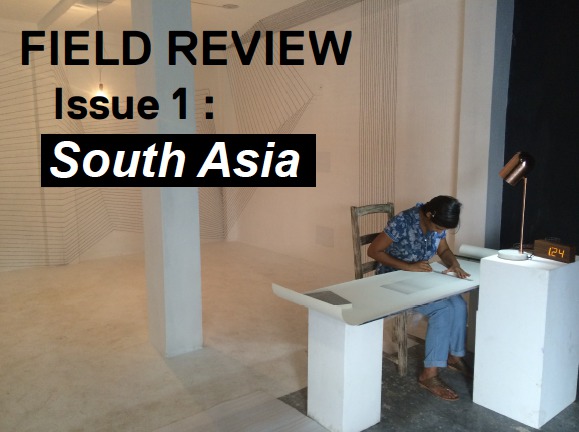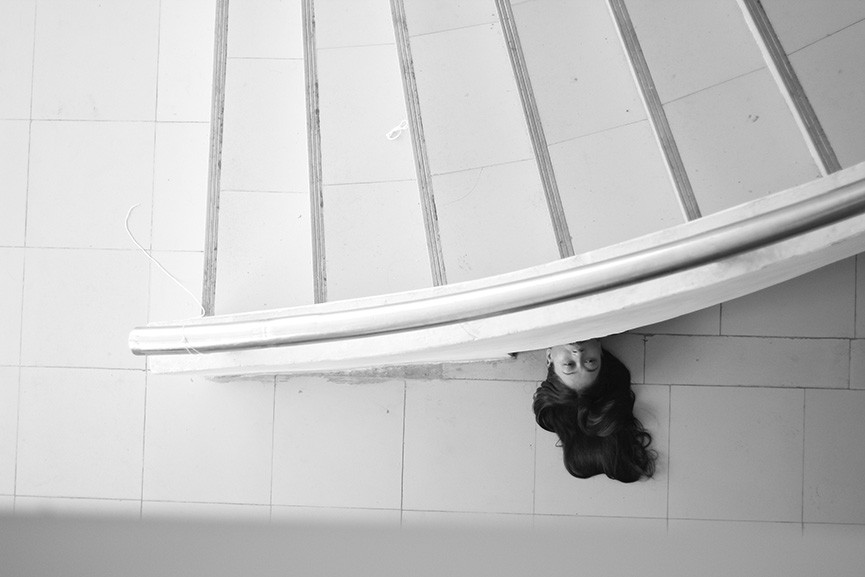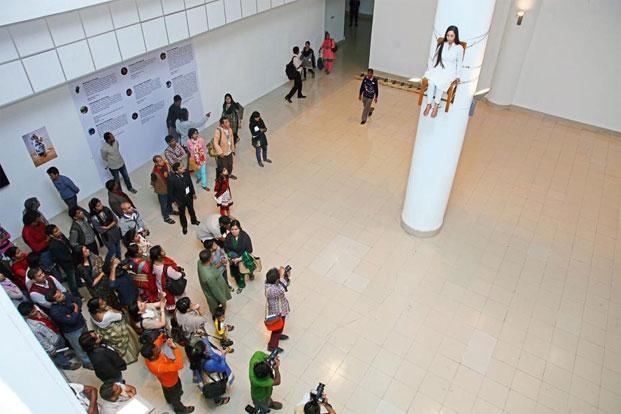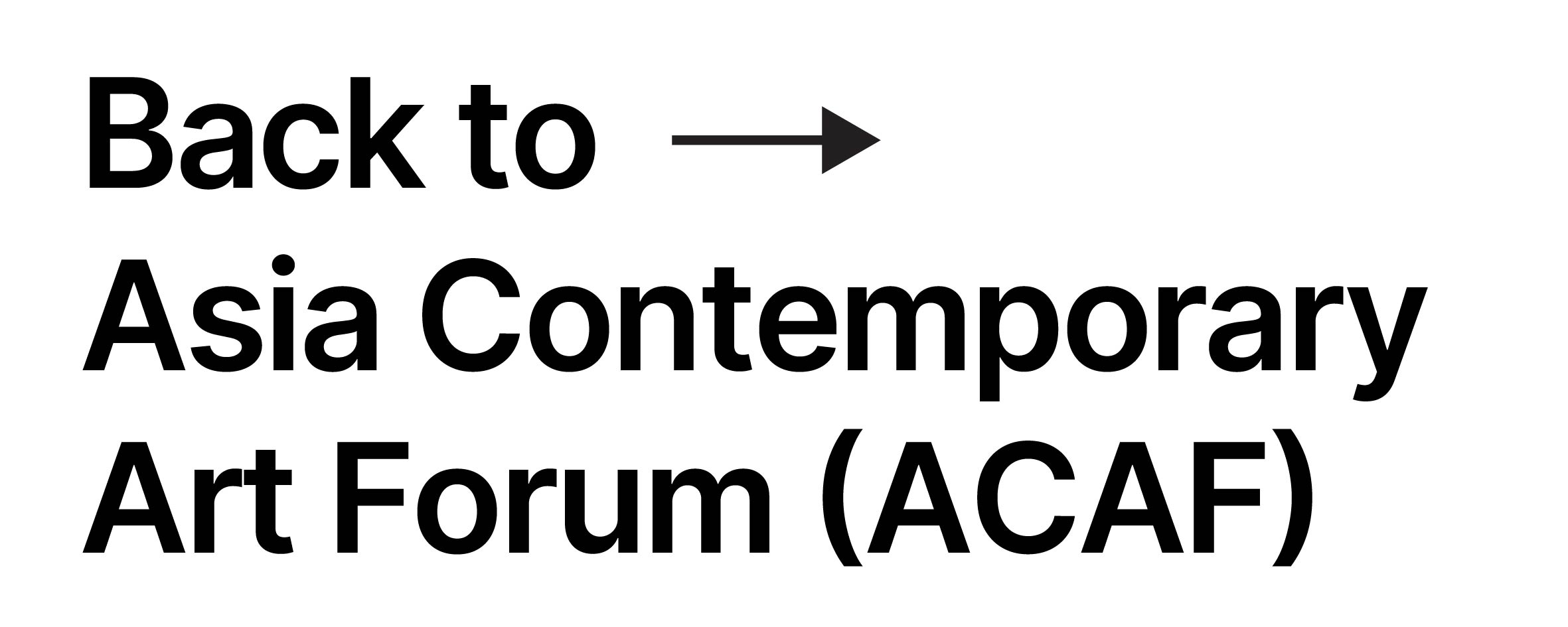FIELD REVIEW: South Asia

Introduction
Meenakshi Thirukode
______________________________________
Abstraction De-Constructed through the Lens of Post-Colonialism
Achia Anzi
Grasping at the Untold
Jyoti Dhar
Kumar Vaidya: Through the Lens of Erasure and Invisibility
Meenakshi Thirukode
Yasmin Jahan Nupur: Dancing in the Non-Spaces of Performance
Zeenat Nagree
The Poetics of Absence and Presence in Parul Gupta’s Art: A Case for Revisiting Theories and Histories of Abstraction
Somak Ghoshal
The Immediacy Of Rejection: Music, Curation, and Sincerity in New India
Rana Ghose
______________________________________
About the Author
Zeenat Nagree
first approached art writing through journalism. After acquiring a Bachelor’s degree in Mass Media from the University of Mumbai, she edited the art pages of Time Out Mumbai for over two years. Last year, Nagree authored the catalogue for The Škoda Prize for Indian Contemporary Art. Now a Text Editor with ART India, Nagree seeks to immerse herself in the field of art criticism.
Yasmin Jahan Nupur: Dancing in the Non-Spaces of Performance
Zeenat Nagree
The colonial discovery of the stupas at Sanchi took place sometime in 1818 when General Taylor stumbled upon a ruin overrun with vegetation. Taylor’s wanderings brought into existence a site that appeared not to have existed for centuries. Curiosity regarding the hidden contents of the outwardly shapeless stupas prompted plunder that exceeded the structure’s tenacity. By 1851, when General Cunningham, who would go on to become the archaeological surveyor to the British government of India a decade later, dismantled parts of the stupa in search of what lay within, destruction had become the norm of engagement: Yasmin Jahan Nupur, Relationship with Architecture, 2015. Performance at the Samdani Seminars 2015, Dhaka. Courtesy of the artist and Samdani Art Foundation. Photographer: Noor Photoface Yasmin Jahan Nupur, Sat on a Chair, 2014. Performance at the Dhaka Art Summit, Dhaka, 2014. Courtesy of the artist and Samdani Art Foundation.
“The persons who tried to open the great Sanchi Tope in 1822 made a large breach on the south-west side, and carried the excavation to the foundation, but they failed in reaching the centre of the building. The Tope was thus partly ruined without any discovery having been made to repay its destruction.” [1]
While Cunningham seemed to be cognizant of the violence of the treasure-seekers, his search for buried valuables in turn violated the site’s structural logic. Of his own actions, Cunningham simply reported—“a shaft was sunk in the centre.” [2]
The excavation of history can be indistinguishable from the desire for possession.
After disappearances
The writing of art history in the not-West must contend with phantoms whose genealogies cannot be clearly traced. Some questions, among others: Do ideas exist if they have not been named? Can we inhabit a mode of thought in the absence of an existing structure? Can the destruction of the past continue as an invisible process into the present?
When Partha Chatterjee uses a possessive pronoun to claim a relationship with modernity, he multiplies and fractures the equation between aspiration and experience:
“There must be something in the very process of our becoming modern that continues to lead us, even in our acceptance of modernity, to a certain skepticism about its values and consequences.” [3]
While we are still looking for a sealed capsule of the past to unpack, the phantoms knock at our door. If we instead adopt destruction as a methodology, perhaps we can finally dance among the ruins?
No-context pedagogy [4]
Despite the absence of troves of evidence to construct a long history of performance art in the subcontinent, the desire to live in the contemporary moment cannot be supressed. While it may be possible to make claims about firsts, to find moments of origin, tracing networks that eviscerate anxieties of influence is also a current survival strategy. Nevertheless, a change in the method of excavation: As Mieke Bal asks while writing a preposterous history, “Who illuminates—helps us understand—whom?” [5]
Foraging in the forests of Kanha, for the “aesthetics of self-preservation,” Yasmin Jahan Nupur has been inhabiting transitory pedagogical frameworks that build upon the absence of formal structures. Some of her recent works have developed in workshops curated collectively by Nikhil Chopra, Jana Prepeluh, and Madhavi Gore. [6] Nupur’s actions address over and over again the complexities of moving within a non-existent pedagogical context, rearranging compatriots, friends, and mentors, and questioning the possibilities of teaching itself.
In a Santhal community centre, Nupur climbed up on a parapet close to the roof while members dance and made music below. Nupur created her own rhythm and gestures in the brackets of a folk performance. There is the desire to create perpendicular to tradition. The collaboration, Yanyeh (2016) acknowledges Nupur’s status as an uninvited guest, in white, trying to blend into the walls.
Then, reappearances

At the Bangladesh Shilpakala Academy, during Relationship with Architecture (2015), Nupur occupied the crevices within the building for six hours. This duration was filled with moments of rest and movement. While Nupur found alignments between the surfaces of her body and that of the building, the two could not ever fully coincide. Her attempt to close the gap between body and architecture was an ongoing, incomplete process, as if she was forcing the structure to open up, to create space for performance in its sweeping curves and corners. Buildings represent the aspirations of building—in this case, a national culture of art-making. Can a building’s role within the community expand with the weight of a body?
The performance followed up on Nupur’s Sat on the Chair (2014), during which the artist was still for three hours, suspended from a column, looking ahead, testing the structure’s tenacity through her silent presence. Alternating between hiding her body within the building of the Shilpakala Academy, and presenting it as a sculptural object, Nupur’s intervention in this site of the display of national identity may have left physical traces.

In a historic speech on the 7th of March 1971 in Dhaka, Sheikh Mujibur Rahman called for the foundation of Bangladesh in defiance of the government in West Pakistan, “Our national assembly will sit. We will draw up the constitution there. We will build this country.” But, the building had already begun for another nation. In an interview on the plans for the parliamentary building of the second legislative capital of Pakistan, Dhaka, in 1964, Kahn stated:
“On the night of the third day, I fell out of bed with the idea which is still the prevailing idea of the plan. This came simply from the realization that assembly is of a transcendent nature. Men came to assemble to touch the spirit of commonness, and I thought this must be expressible.” [7]
A commonness that remains murky. A no man’s land in which Nupur stands with a white flag. [8]
The building continued. The Shilpakala Academy was established through an act of parliament in 1974 to promote the new nation’s culture. Nupur adds her weight to this structure built for assembly, reminding the onlooker that it was meant to be a vessel to hold bodies, bodies that built it, bodies that were imagined to form a commonness, and even those bodies that have been violently destroyed for differing visions of national culture.
The construction of a history and the making of a nation require building, but what of the desire to posses, the accompanying destruction?
Score for a past performance
Extrapolations from Another crazy thing I can do, dance! (2016): [6]
1. Dance
2. Dance, even if you don’t know how to
3. Dance with strangers
4. Dance with the structure
5. Dance to leave a trace
6. Dance
_____________________________________________________________________________
Bibliography
1.Alexander Cunningham, The Bhilsa topes; or, Buddhist monuments of central India: comprising a brief historical sketch of the rise, progress, and decline of Buddhism; with an account of the opening and examination of the various groups of topes around Bhilsa (London: Smith, Elder and Co, 1854): 269.
2.Ibid, 297.
3.Partha Chatterjee, Our Modernity (Rotterdam: Sephis/Codesria, 1997): 14.
4.See Nancy Adajania’s discussion of no-context media. Nancy Adajania, “New Media Overtures Before New Media Practice in India,” Domus India 4 no. 3 (January 2015): 36-7.
5.Mieke Bal, Quoting Caravaggio: Contemporary Art, Preposterous History (Chicago: University of Chicago Press, 1999): 3.
6.Nikhil Chopra, Madhavi Gore, and Jana Prepeluh conducted a performance art workshop at the Kanha National Park and Tiger Reserve, Madhya Pradesh, in November 2015. The theme of the workshop was “Aesthetics of self-preservation.” A few months earlier, in April 2015, Chopra, Gore and Prepeluh curated a workshop in Dhaka as part of the events leading upto the Dhaka Art Summit. Relationship with Architecture was developed during the Dhaka workshop, as well as Another crazy thing I can do, dance!, Nupur’s presentation for the 2016 Dhaka Art Summit. Chopra and Gore, along with Romain Loustau, are co-founders of Heritage Hotel Art Spaces, an artist-run residency space for live art in Goa started in October 2014.
7. Louis Kahn quoted in Sarah Ksiazek, “Architectural Culture in the Fifties: Louis Kahn and the National Assembly Complex in Dhaka,” Journal of the Society of Architectural Historians 52 no. 4 (December 1993): 416.
8. Flying the White Flag in No Man’s Land, 201X.


